Magnetron Sputtering of Au-Based Alloys on NiTi Elements: Surface Investigation for New Products in SMA-Based Fashion and Luxury Accessories and Watchmaking
Abstract
1. Introduction
2. Materials and Methods
2.1. Deposition Process
2.2. Morphological and Microstructural Analysis and Characterization of Functional Properties
2.3. Mechanical Properties of the Coatings
2.4. Tribocorrosion Characterization
3. Results and Discussion
3.1. Morphological, Compositional, and Microstructural Characterization
3.2. Characterization of the Functional Properties
3.3. Mechanical Properties of the Coatings
3.4. Wear Tests
3.5. Tribocorrosion Characterization
4. Conclusions
- The deposited films trace and reproduce the substrate surface topology, exhibiting a rough morphology. The obtained colorations, from light yellow to reddish, were in accordance with the indication given by the standards. Moreover, all the Au-based coatings exhibited a microstructural uniformity.
- The first mechanical characterization of the coated NiTi ribbons evidenced that the functional properties were not affected by the application of Au-alloy films, since they could easily accommodate both small and large deformations, indicating good ductility and malleability. Indeed, the damping, shape recovery, and superelastic behavior of the NiTi elements were preserved.
- The evaluation of the mechanical properties of the coating/substrate system was performed using the CMC loading procedure. The evolution of both hardness and elastic modulus values were comparable in all the coated samples, and on average, they were slightly higher than the corresponding values for the uncoated NiTi substrates.
- Scratch tests allowed for the investigation of the adhesion performance of the Au-based coatings on the NiTi substrates and evidenced a ductile failure mode without the occurrence of chipping or delamination. In all cases, the mechanical stress produced during the scratch test did not cause the film break at the interface with the NiTi substrate, but the failure of each film was mainly cohesive, indicating a satisfactory adhesion.
- Both the coefficient of friction (COF) and electric contact resistance (ECR) were registered during dry wear tests. The two trends were in accordance and indicated that, thanks to their ductile nature and good adhesion to the substrate, all the Au-based films provided an effective protective action for the NiTi component. Indeed, considering the COF values, they increased progressively with the number of sliding cycles for the NiTi substrate, while a stabilization trend occurred for the coated samples, indicating a less severe friction phenomenon. Among the coatings, the best performance was given by Au5N, which reached the steady state later than the other ones, and its COF settled at a slightly lower value. On the other hand, both Au4N and Au5N coatings, which showed a slower increase in COF with respect to Au2N, exhibited the lowest ECR plateau, indicating a better resistance to wear.
- Tribocorrosion tests in simulated body fluid allowed the evaluation of the lowering of the open cell voltage (OCV), which is frequently observed during sliding and wear in a corrosive environment. The OCV of NiTi abruptly decreased when sliding in Ringer’s solution started, due to the mechanical detachment of the passive film. In the case of the coated samples, the OCV was only slightly disturbed during sliding thanks to the good protective behavior of the Au-coatings in test environment. Moreover, the registered COF curves exhibited, as in the dry wear tests, an increasing trend towards a plateau due to the material wear, which generated particle deliverance that induced a lubricating action. This specific wear behavior of the coated samples was confirmed by the tribocorrosion traces, which appeared smoother thanks to the plastic deformation of the film, therefore protecting the substrate material from wear and corrosion.
Author Contributions
Funding
Institutional Review Board Statement
Informed Consent Statement
Data Availability Statement
Acknowledgments
Conflicts of Interest
References
- Otsuka, K.; Ren, X. Physical metallurgy of Ti-Ni-based shape-memory alloys. Prog. Mater. Sci. 2005, 50, 511–678. [Google Scholar] [CrossRef]
- Otsuka, K.; Wayman, C.M. Shape Memory Materials; Cambridge University Press: Cambridge, UK, 1999. [Google Scholar]
- Wolff, I.M. Spangold: A new aura for intermetallics. Endeavour 1995, 19, 16–19. [Google Scholar] [CrossRef]
- Wolff, I.M.; Cortie, M.B. The development of Spangold. Gold Bull. 1994, 27, 44–54. [Google Scholar] [CrossRef]
- Besseghini, S.; Passaretti, F.; Villa, E.; Fabbro, P.; Ricciardi, F. Gold with a martensitic transformation: Which opportunities? Gold Bull. 2007, 40, 328–335. [Google Scholar] [CrossRef]
- Casalena, L.; Coughlin, D.; Yang, F.; Chen, X.; Paranjape, H.; Gao, Y.; Noebe, R.D.; Bigelow, G.S.; Gaydosh, D.J.; Padula, S.A.; et al. Transformation and Deformation Characterization of NiTiHf and NiTiAu High Temperature Shape-memory alloys. Microsc. Microanal. 2015, 21, 607–608. [Google Scholar] [CrossRef]
- Casalena, L.; Bigelow, G.S.; Gao, Y.; Benafan, O.; Noebe, R.D.; Wang, Y.; Mills, M.J. Mechanical behavior and microstructural analysis of NiTi-40Au shape-memory alloys exhibiting work output above 400 °C. Intermetallics 2017, 86, 33–44. [Google Scholar] [CrossRef]
- Beard, G. Jewelry Including Shape Memory Alloy Elements. U.S. Patent 6,675,610 B2, 13 January 2004. [Google Scholar]
- Johnson, A.D. TiNi Alloy Company, San Leandro, CA (US), Assignee. Eyeglass Frame. U.S. Patent 7,441,888 B1, 28 October 2008. [Google Scholar]
- Beard, G. Manufacturing Method for Jewelry Including Shape Memory Alloy Elements. U.S. Patent 6,910,273 B2, 28 June 2005. [Google Scholar]
- Holemans, T.; Stalmans, R. Jewelry Arrangements. E.P. Patent 1 286 606 B1, 1 June 2005. [Google Scholar]
- Huynh, K.T. Closure for Article, in Particular for Jewelry. U.S. Patent 2015/0027167 A1, 29 January 2015. [Google Scholar]
- Huynh, C. Jewelry That Reversibly Transitions between Two Different Configurations. U.S. Patent 2020/0113296 A1, 16 April 2020. [Google Scholar]
- EN ISO 8654:2018+A1:2019; Jewellery—Colors of Gold Alloys—Definition, Range of Colors and Designation. Comite Europeen de Normalisation: Brussels, Belgium, 2019.
- Ahmed, R.A.; Fadl-allah, S.A.; El-Bagoury, N.; El-Rab, S.M.F.G. Improvement of corrosion resistance and antibacterial effect of NiTi orthopedic materials by chitosan and gold nanoparticles. Appl. Surf. Sci. 2014, 292, 390–399. [Google Scholar] [CrossRef]
- Katić, V.; Ćurković, L.; Ujević Bošnjak, M.; Špalj, S. Determination of corrosion rate of orthodontic wires based. Materialwissenschaft und Werkstofftechnik 2014, 45, 99–105. [Google Scholar] [CrossRef]
- Vikulova, E.S.; Karakovskaya, K.I.; Koretskaya, T.P.; Korolkov, I.V.; Chepeleva, E.V.; Asanov, I.P.; Tsygankova, A.R.; Maksimovskii, E.A.; Marchenko, E.S.; Lantsukhay, Y.A.; et al. MOCVD of Noble Metal Film Materials for Medical Implants: Microstructure and Biocompatibility of Ir and Au/Ir Coatings on TiNi. Coatings 2021, 11, 638. [Google Scholar] [CrossRef]
- Es-Souni, M.; Es-Souni, M.; Fischer-Brandies, H. Assessing the biocompatibility of NiTi shape-memory alloys used for medical applications. Anal. Bioanal. Chem. 2005, 381, 557–567. [Google Scholar] [CrossRef]
- Steegmueller, R.; Wagner, C.; Fleckenstein, T.; Schuessler, A. Gold Coating of Nitinol Devices for Medical Applications. Mater. Sci. Forum 2002, 394–395, 161–164. [Google Scholar] [CrossRef]
- Krishnan, M.; Seema, S.; Kumar, A.V.; Varthini, N.P.; Sukumaran, K.; Pawar, V.R.; Arora, V. Corrosion resistance of surface modified nickel titanium archwires. Angle Orthod. 2014, 84, 358–367. [Google Scholar] [CrossRef] [PubMed]
- Gonçalves de Albuquerque, C.; Bortolazzo Correr, A.; Cherubini Venezian, G.; Santamaria, M., Jr.; Tubel, C.A.; Scudeler Vedovello, S.A. Deflection and Flexural Strength Effects on the Roughness of Aesthetic-Coated Orthodontic Wires. Braz. Dent. J. 2017, 28, 40–45. [Google Scholar] [CrossRef] [PubMed][Green Version]
- Mirvakili, S.M.; Hunter, I.W. Fast Torsional Artificial Muscles from NiTi Twisted Yarns. ACS Appl Mater. Interfaces 2017, 9, 16321–16326. [Google Scholar] [CrossRef]
- Thornton, J.A. High rate thick film growth. Annu. Rev. Mater. Sci. 1977, 7, 239. [Google Scholar] [CrossRef]
- Muller, K.H. Stress and microstructure of sputter-deposited thin films—Molecular dynamics investigation. J. Appl. Phys. 1987, 62, 1796–1799. [Google Scholar] [CrossRef]
- Constantin, R.; Miremad, B. Performance of hard coatings, made by balanced and unbalanced magnetron sputtering, for decorative applications. Surf. Coat. Technol. 1999, 120, 728–733. [Google Scholar] [CrossRef]
- Williams, E.W. Gold ion plating. Gold Bull. 1978, 11, 30–34. [Google Scholar] [CrossRef][Green Version]
- Oliver, W.C.; Pharr, G.M. An improved technique for determining hardness and elastic modulus using load and displacement sensing indentation experiments. J. Mater. Res. 1992, 7, 1564–1583. [Google Scholar] [CrossRef]
- Oliver, W.C.; Pharr, G.M. Measurement of hardness and elastic modulus by instrumented indentation: Advances in understanding and refinements to methodology. J. Mater. Res. 2004, 19, 3–20. [Google Scholar] [CrossRef]
- International Standard ISO 20502; Fine Ceramics (Advanced Ceramics, Advanced Technical Ceramics)—Determination of Adhesion of Ceramic Coating by Scratch Testing. ISO: Geneva, Switzerland, 2007.
- ASTM G133-05(2010); Standard Test Method for Linearly Reciprocating Ball-on-Flat Sliding Wear. ASTM International: West Conshohocken, PA, USA, 2010.
- Bushan, B. Modern Tribology Handbook; Chapter 3; CRC Press LLC: Boca Raton, FL, USA, 2001. [Google Scholar]
- Furko, M.; Balázsi, C. Morphological, Chemical, and Biological Investigation of Ionic Substituted, Pulse Current Deposited Calcium Phosphate Coatings. Materials 2020, 13, 4690. [Google Scholar] [CrossRef] [PubMed]
- Chelliah, N.M.; Padaikathan, P.; Kumar, R. Evaluation of electrochemical impedance and biocorrosion characteristics of as-cast and T4 heat treated AZ91 Mg-alloys in Ringer’s solution. J. Magnes. Alloys 2019, 7, 134–143. [Google Scholar] [CrossRef]
- Daniel, R.; Martinschitz, K.J.; Keckes, J.; Mitterer, C. The origin of stresses in magnetron-sputtered thin films with zone T structures. Acta Mater. 2010, 58, 2621–2633. [Google Scholar] [CrossRef]
- Lohmiller, J.; Woo, N.C.; Spolenak, R. Microstructure-property relationship in highly ductile Au-Cu thin films for flexible electronics. Mater. Sci. Eng. A 2010, 527, 7731–7740. [Google Scholar] [CrossRef]
- Michaelsen, C. On the structure and homogeneity of solid solutions: The limits of conventional X-ray diffraction. Philos. Mag. A. 1995, 72, 813–828. [Google Scholar] [CrossRef]
- Liu, J.; Liu, Y.; Gong, P.; Li, Y.; Moore, K.M.; Scanley, E.; Walker, F.; Broadbridge, C.C.; Schroers, J. Combinatorial exploration of color in gold-based alloys. Gold Bull. 2015, 48, 111–118. [Google Scholar] [CrossRef]
- Firstov, G.S.; Vitchev, R.G.; Kumar, H.; Blanpain, B.; Van Humbeeck, J. Surface oxidation of NiTi shape memory alloy. Biomaterials 2002, 23, 4863–4871. [Google Scholar] [CrossRef]
- Saraswati, T.; Sritharan, T.; Mhaisalkar, S.; Breach, C.D.; Wulff, F. Cyclic loading as an extended nanoindentation technique. Mater. Sci. Eng. A 2006, 423, 14–18. [Google Scholar] [CrossRef]
- Steinmann, P.A.; Tardy, Y.; Hintermann, H.E. Adhesion testing by the scratch test method: The influence of intrinsic and extrinsic parameters on the critical load. Thin Solid Film. 1987, 154, 333–349. [Google Scholar] [CrossRef]
- Bull, S.J. Failure modes in scratch adhesion testing. Surf. Coat. Technol. 1991, 50, 25–32. [Google Scholar] [CrossRef]
- Bull, S.J. Failure mode maps in the thin film scratch adhesion test. Tribol. Int. 1997, 30, 491–498. [Google Scholar] [CrossRef]
- Slade, P.G. Electrical Contacts: Principles and Applications, 2nd ed.; CRC Press: Boca Raton, FL, USA, 2013. [Google Scholar]
- Kosec, T.; Močnik, P.; Mezeg, U.; Legat, A.; Ovsenik, M.; Jenko, M.; Grant, J.T.; Primožič, J. Tribocorrosive Study of New and In Vivo Exposed Nickel Titanium and Stainless Steel Orthodontic Archwires. Coatings 2020, 10, 230. [Google Scholar] [CrossRef]
- Yan, L.; Liu, Y.; Liu, E. Wear behavior of martensitic NiTi shape memory alloy under ball-on-disk sliding tests. Tribol. Int. 2013, 66, 219–224. [Google Scholar] [CrossRef]
- Hutchings, I.M. Friction. In Tribology, Friction and Wear of Engineering Materials; Edward Arnold: London, UK, 1992; pp. 22–35. [Google Scholar]
- Fouvry, S.; Jedrzejczyk, P.; Chalandon, P. Introduction of an exponential formulation to quantify the electrical endurance of micro-contacts enduring fretting wear: Application to Sn, Ag and Au coatings. Wear 2011, 271, 1524–1534. [Google Scholar] [CrossRef]
- Celis, J.-P.; Ponthiaux, P.; Wenger, F. Tribocorrosion of materials: Interplay between chemical, electrochemical, and mechanical reactivity of surfaces. Wear 2006, 261, 939–946. [Google Scholar] [CrossRef]
- Liu, X.; Zhao, X.; An, Y.; Hou, G.; Li, S.; Deng, W.; Zhou, H.; Chen, J. Effects of loads on corrosion-wear synergism of NiCoCrAlYTa coating in artificial seawater. Tribol. Int. 2018, 118, 421–431. [Google Scholar] [CrossRef]
- Ma, F.; Li, J.; Zeng, Z.; Gao, Y. Tribocorrosion behavior in artificial seawater and anti-microbiologically influenced corrosion properties of TiSiN-Cu coating on F690 steel. J. Mater. Sci. Technol. 2019, 35, 448–459. [Google Scholar] [CrossRef]
- Blau, P.J. On the nature of running-in. Tribol. Int. 2005, 38, 1007–1012. [Google Scholar] [CrossRef]
- Blau, P.J. Friction Science and Technology; CRC Press: Boca Raton, FL, USA, 2008; Volume 20084465. [Google Scholar]
- Zhang, C.; Farhat, Z.N. Sliding wear of superelastic TiNi alloy. Wear 2009, 267, 394–400. [Google Scholar] [CrossRef]
- Baraket, M.; Mercs, D.; Zhang, Z.G.; Coddet, C. Mechanical and tribological properties of CrN/Ag and CrSiN/Ag nanoscale multilayers. Surf. Coat. Technol. 2010, 204, 2386–2391. [Google Scholar] [CrossRef]
- Cai, K.; Jiang, B.; Zhang, J.; Su, X. Preparation and Tribocorrosion Performance of Different Si-Doped TiSiN-Ag Coatings on Different Substrates in Seawater. Coatings 2021, 11, 459. [Google Scholar] [CrossRef]
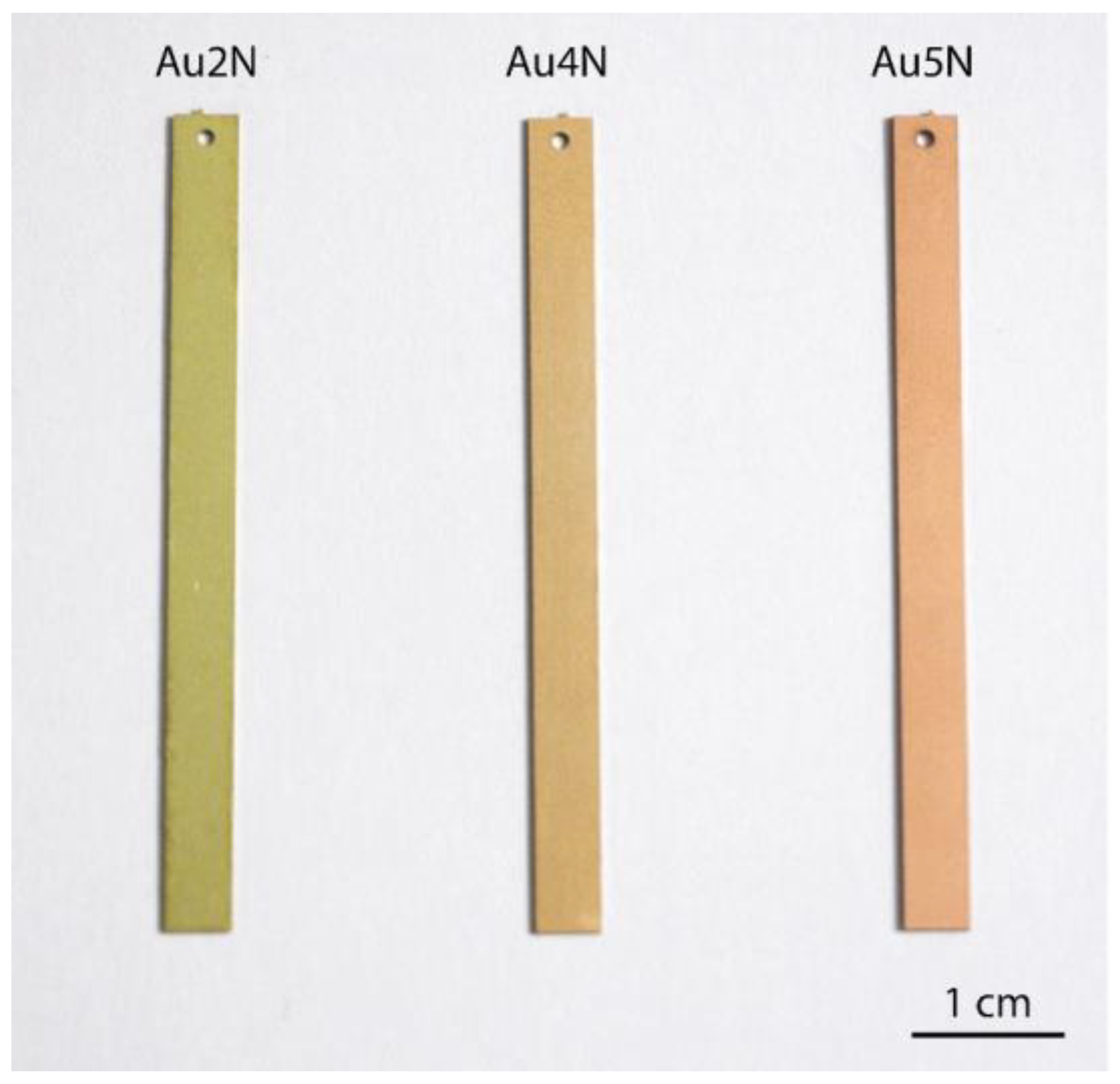
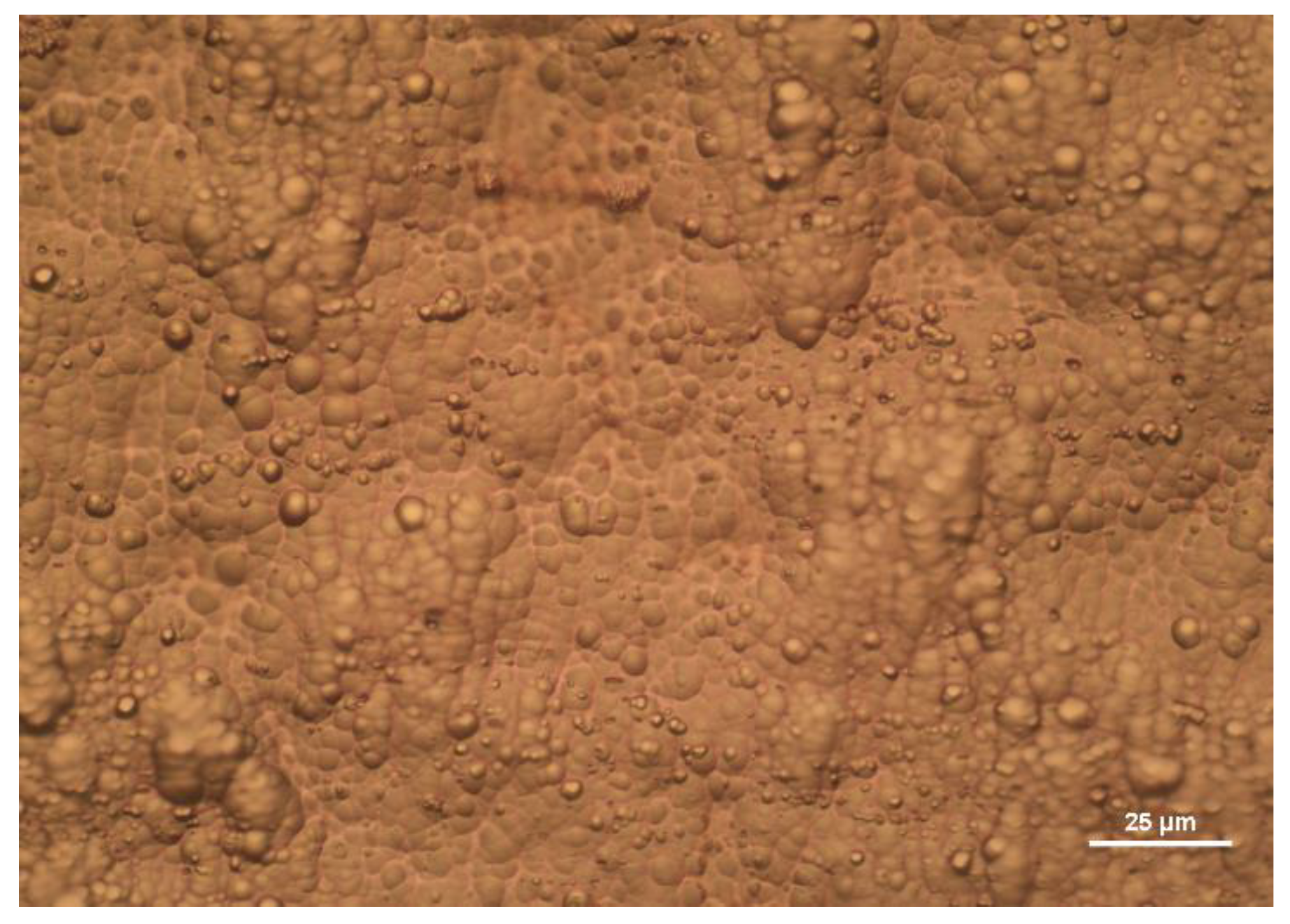

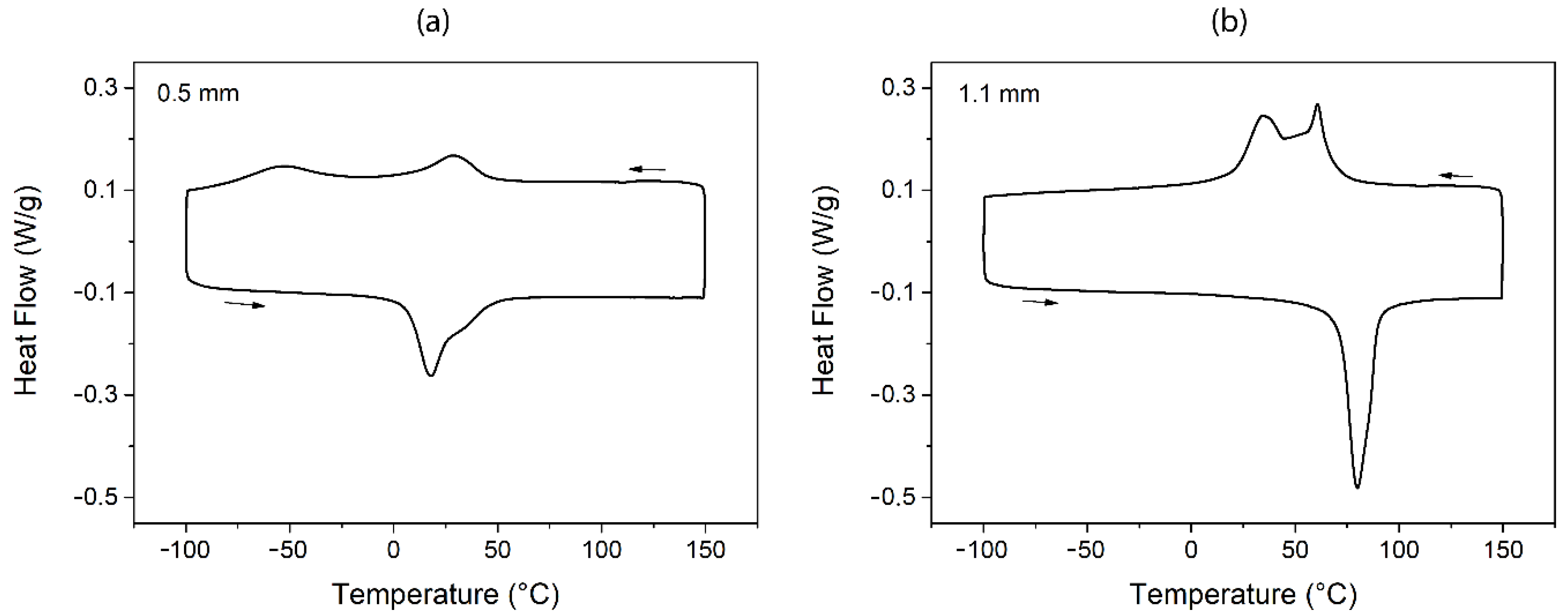
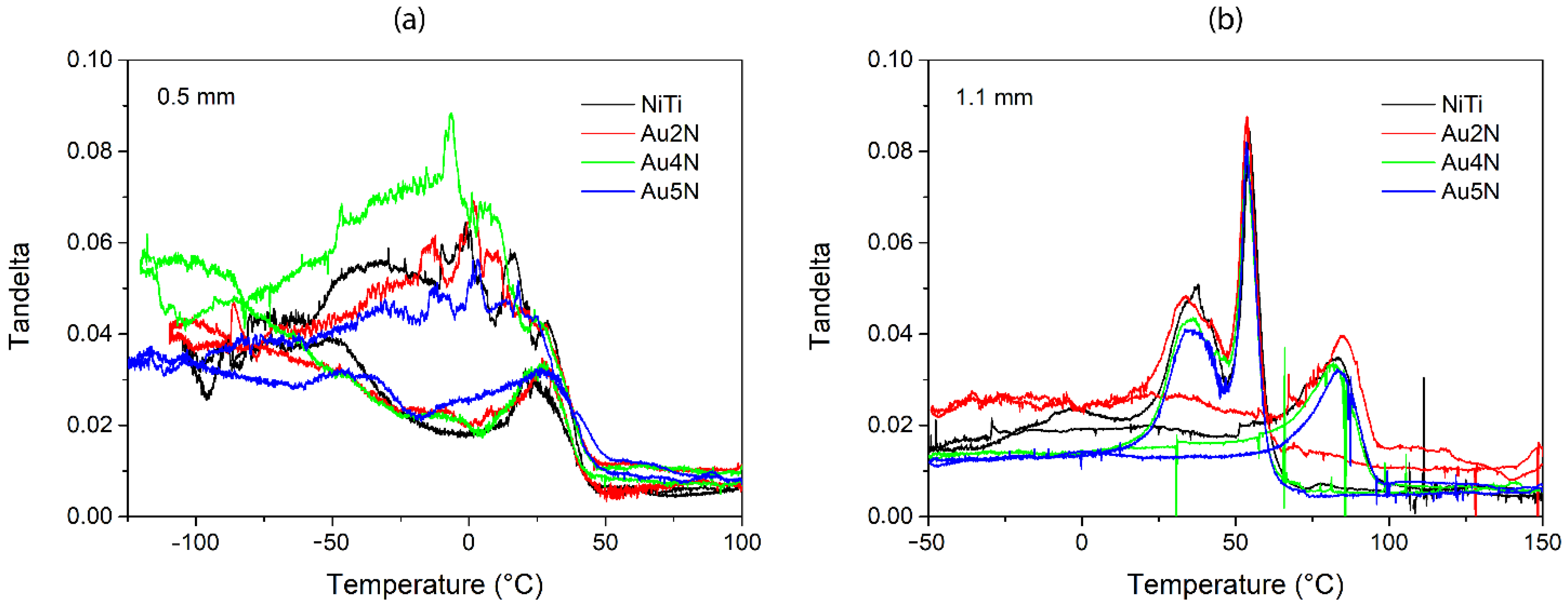
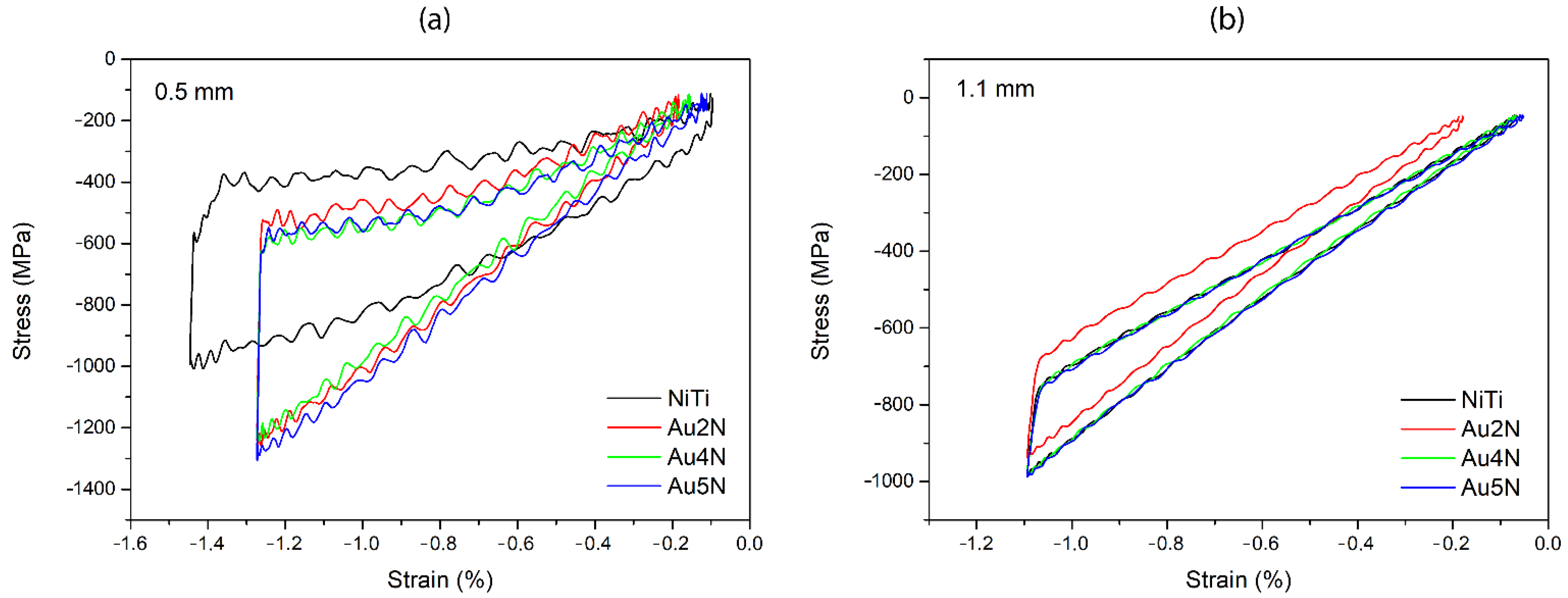

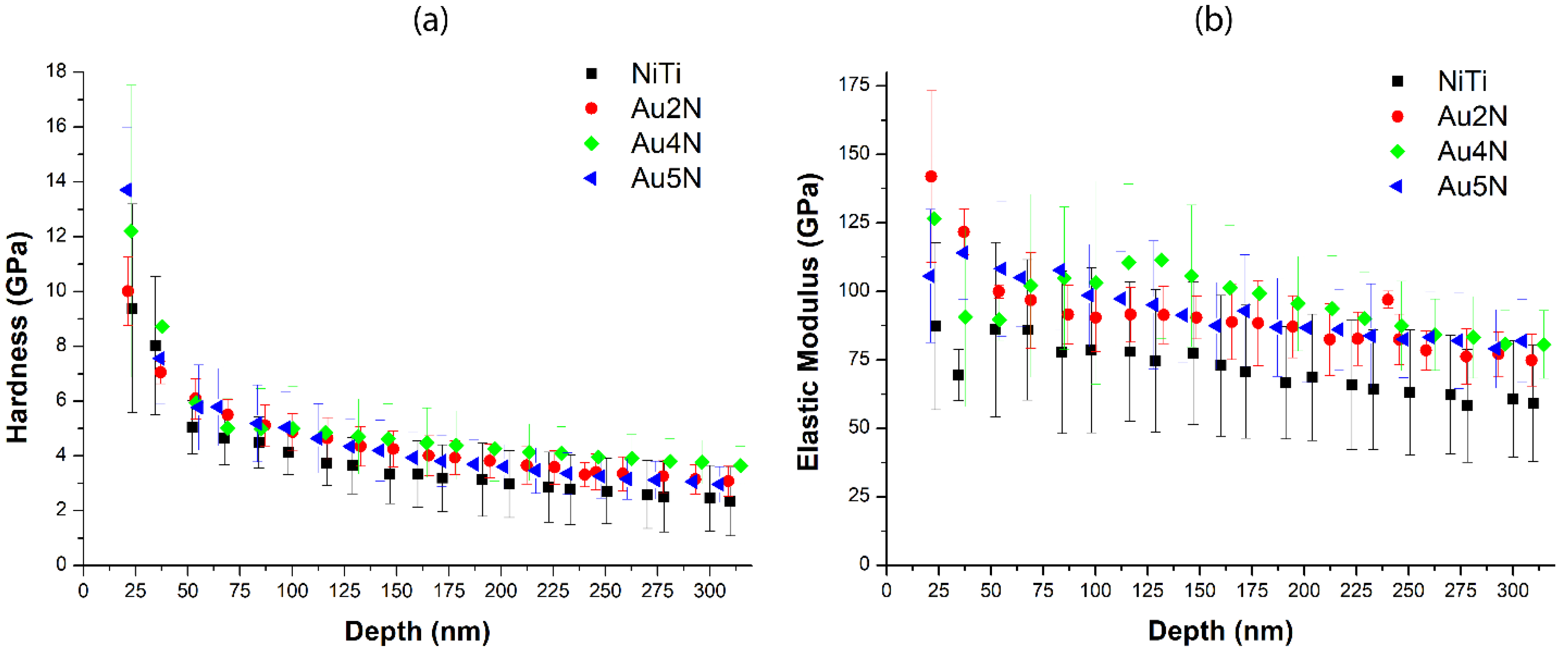

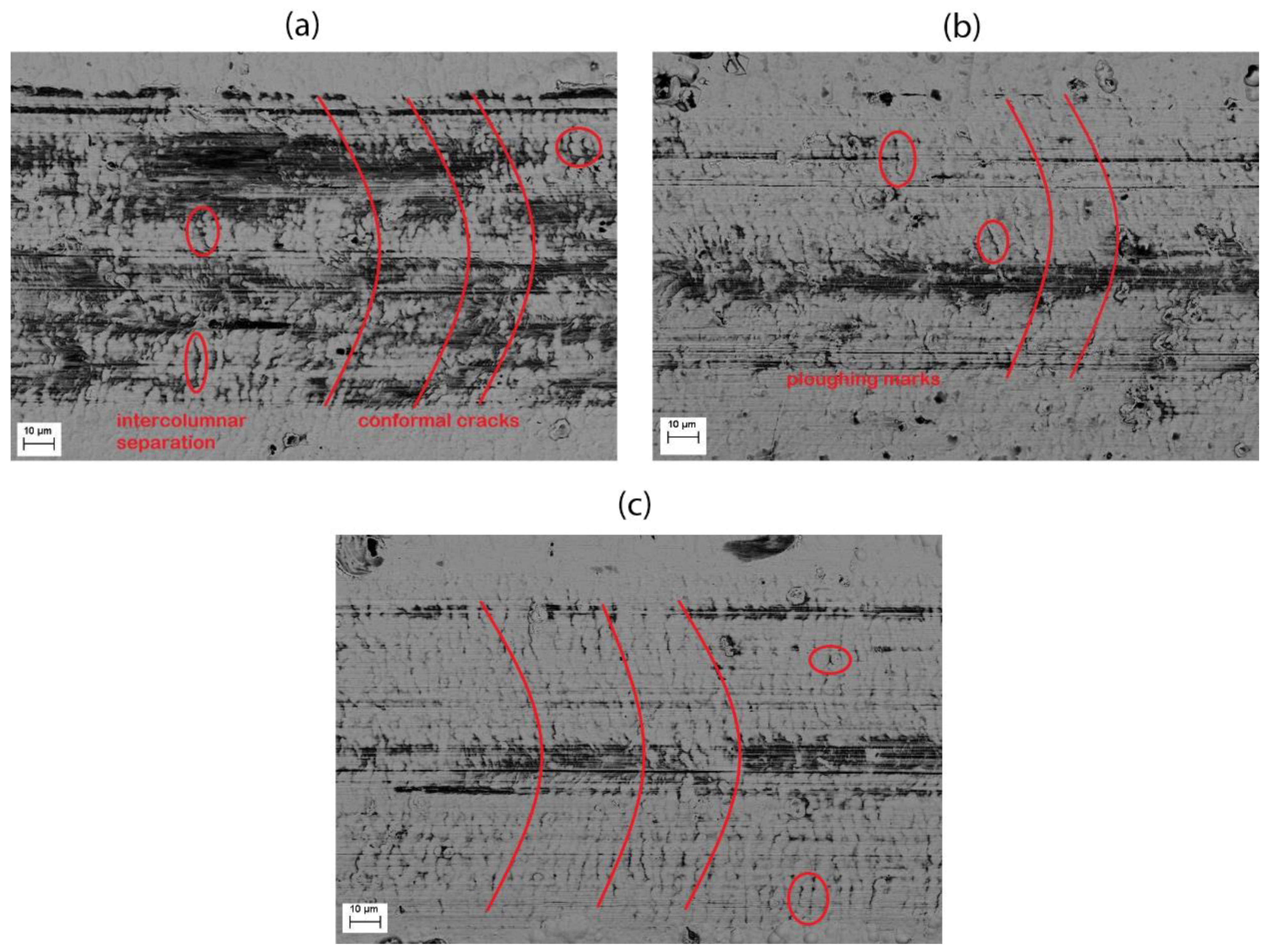
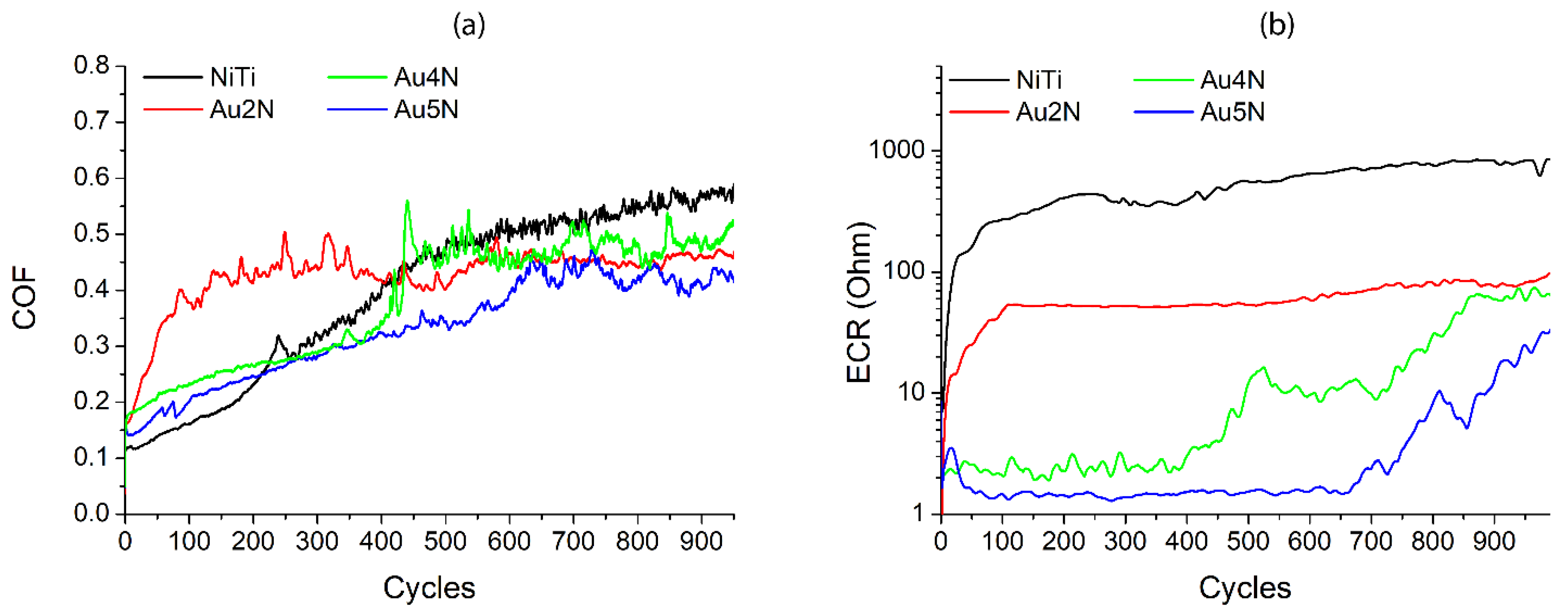
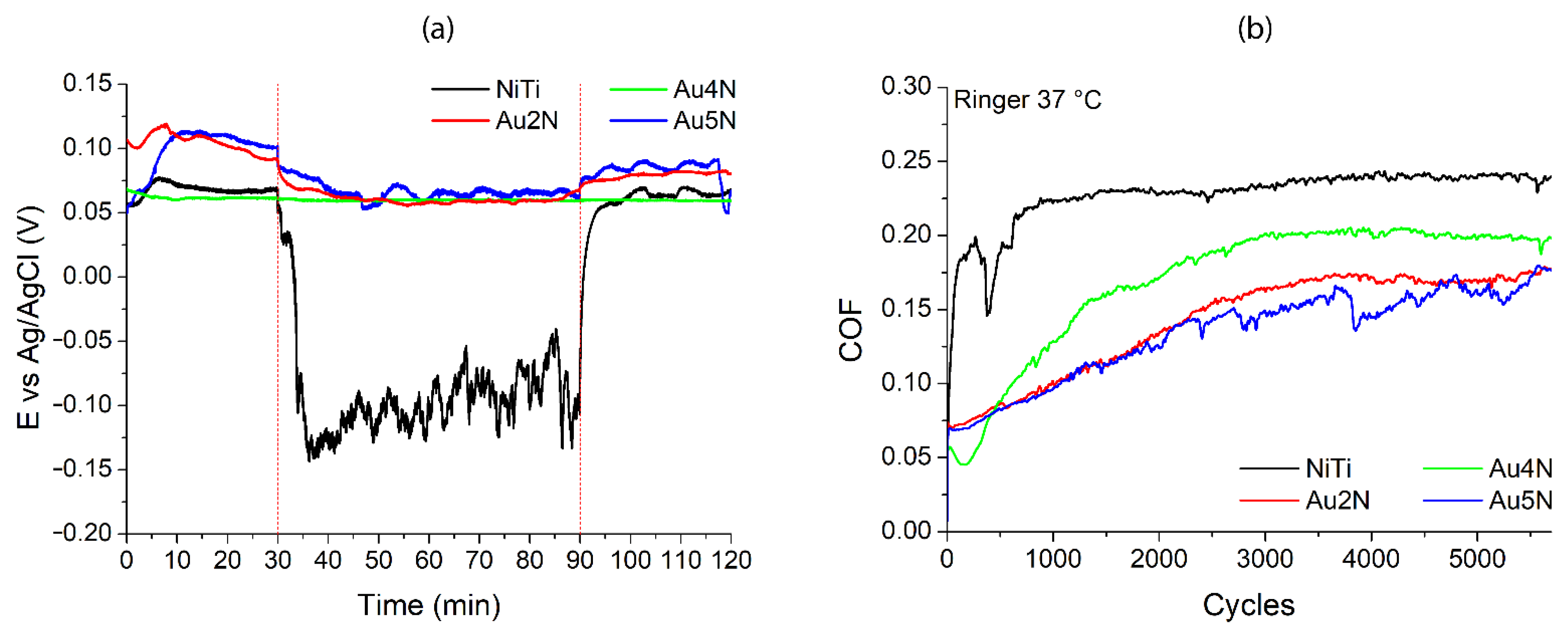
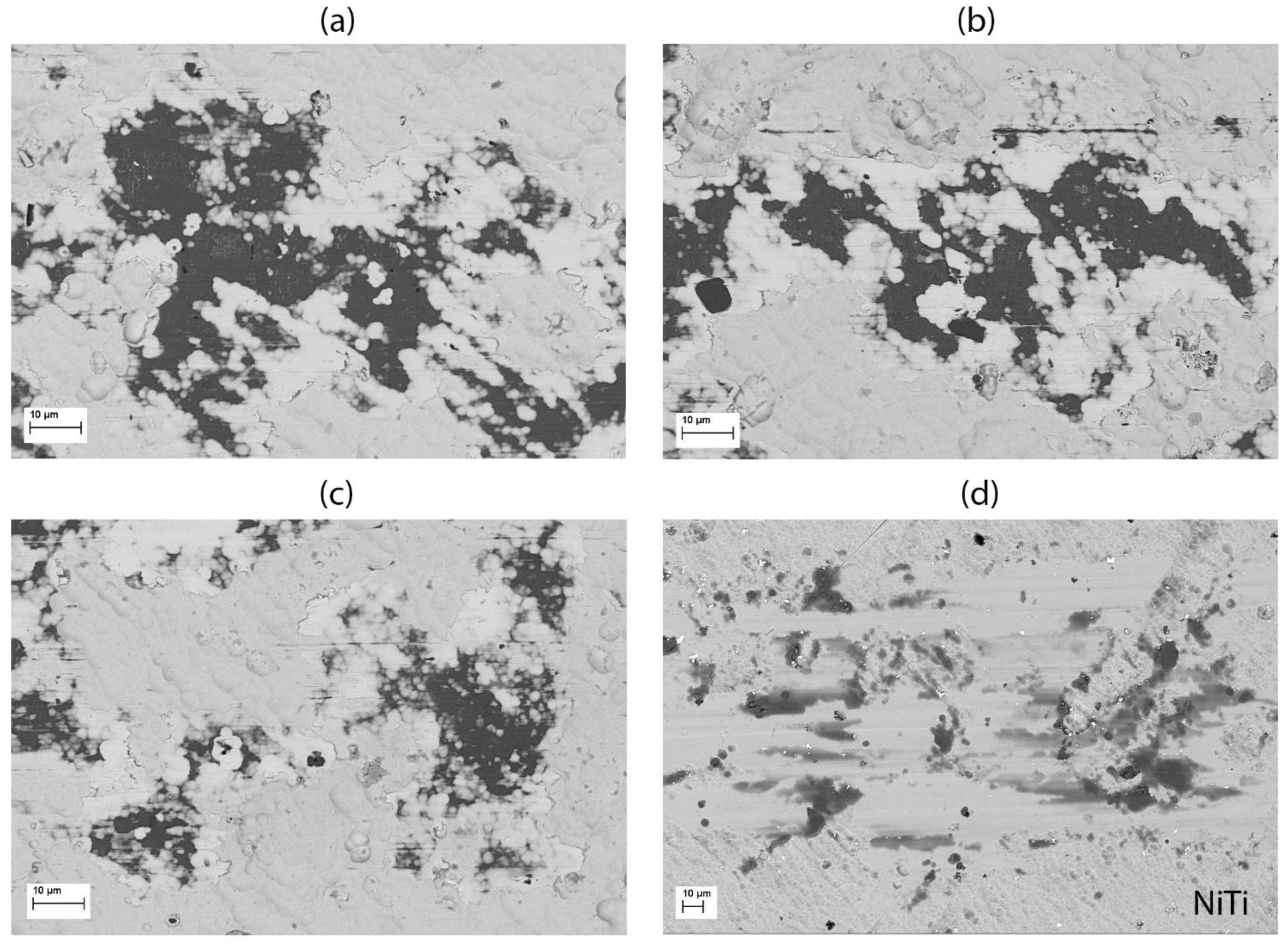
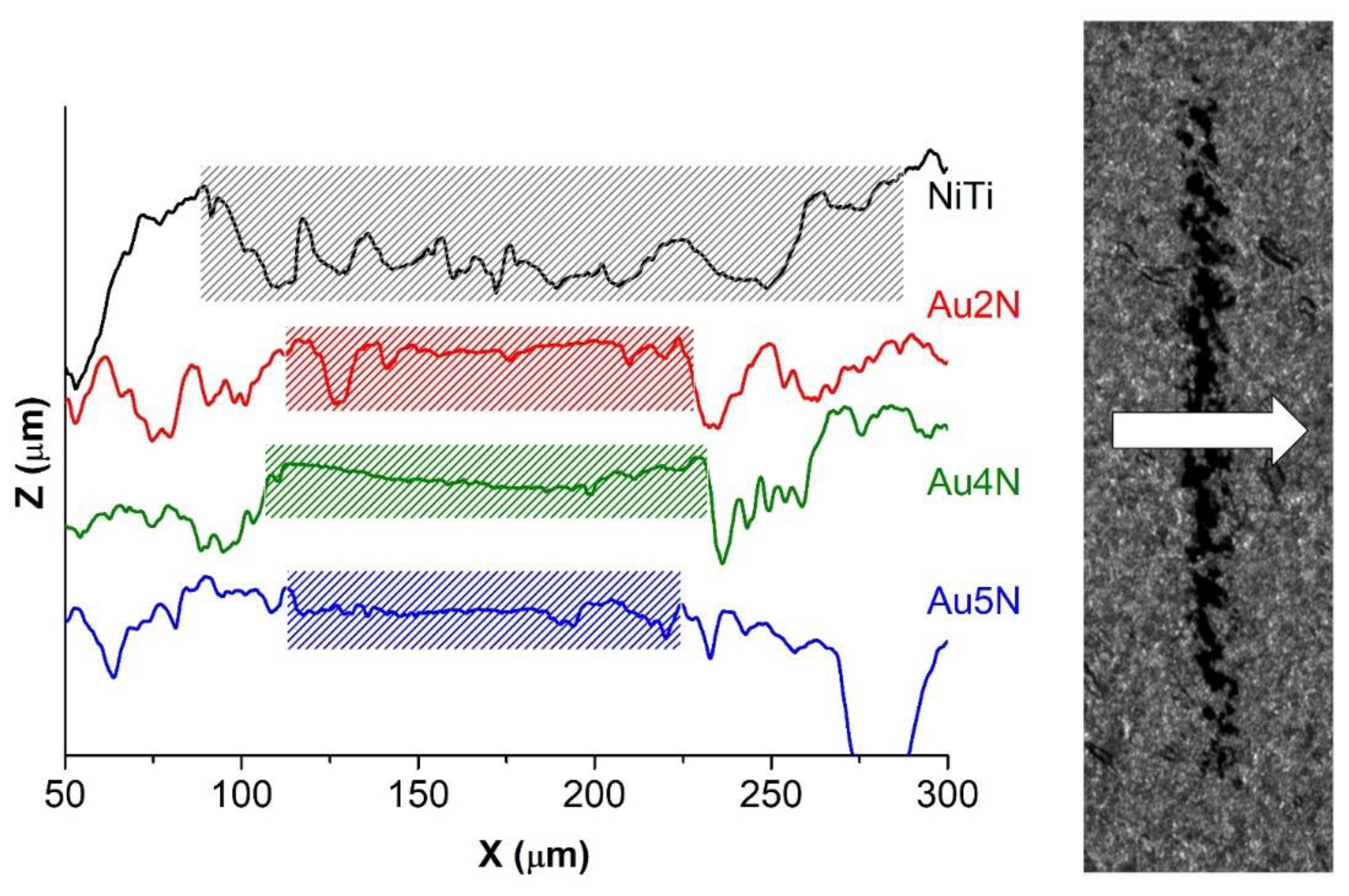
| Sample | Ms (°C) | Mf (°C) | As (°C) | Af (°C) | ΔHcool (J/g) | ΔHheat (J/g) |
|---|---|---|---|---|---|---|
| NiTi 0.5 | 46.3 | −81.4 | 5.9 | 48.3 | 23.5 | 21.7 |
| NiTi 1.1 | 73.0 | 19.7 | 71.3 | 90.7 | 33.4 | 32.9 |
Publisher’s Note: MDPI stays neutral with regard to jurisdictional claims in published maps and institutional affiliations. |
© 2022 by the authors. Licensee MDPI, Basel, Switzerland. This article is an open access article distributed under the terms and conditions of the Creative Commons Attribution (CC BY) license (https://creativecommons.org/licenses/by/4.0/).
Share and Cite
Villa, F.; Bassani, E.; Passaretti, F.; de Ceglia, G.; Viscuso, S.; Zin, V.; Miorin, E.; Deambrosis, S.M.; Villa, E. Magnetron Sputtering of Au-Based Alloys on NiTi Elements: Surface Investigation for New Products in SMA-Based Fashion and Luxury Accessories and Watchmaking. Coatings 2022, 12, 136. https://doi.org/10.3390/coatings12020136
Villa F, Bassani E, Passaretti F, de Ceglia G, Viscuso S, Zin V, Miorin E, Deambrosis SM, Villa E. Magnetron Sputtering of Au-Based Alloys on NiTi Elements: Surface Investigation for New Products in SMA-Based Fashion and Luxury Accessories and Watchmaking. Coatings. 2022; 12(2):136. https://doi.org/10.3390/coatings12020136
Chicago/Turabian StyleVilla, Francesca, Enrico Bassani, Francesca Passaretti, Giuseppe de Ceglia, Stefano Viscuso, Valentina Zin, Enrico Miorin, Silvia Maria Deambrosis, and Elena Villa. 2022. "Magnetron Sputtering of Au-Based Alloys on NiTi Elements: Surface Investigation for New Products in SMA-Based Fashion and Luxury Accessories and Watchmaking" Coatings 12, no. 2: 136. https://doi.org/10.3390/coatings12020136
APA StyleVilla, F., Bassani, E., Passaretti, F., de Ceglia, G., Viscuso, S., Zin, V., Miorin, E., Deambrosis, S. M., & Villa, E. (2022). Magnetron Sputtering of Au-Based Alloys on NiTi Elements: Surface Investigation for New Products in SMA-Based Fashion and Luxury Accessories and Watchmaking. Coatings, 12(2), 136. https://doi.org/10.3390/coatings12020136










